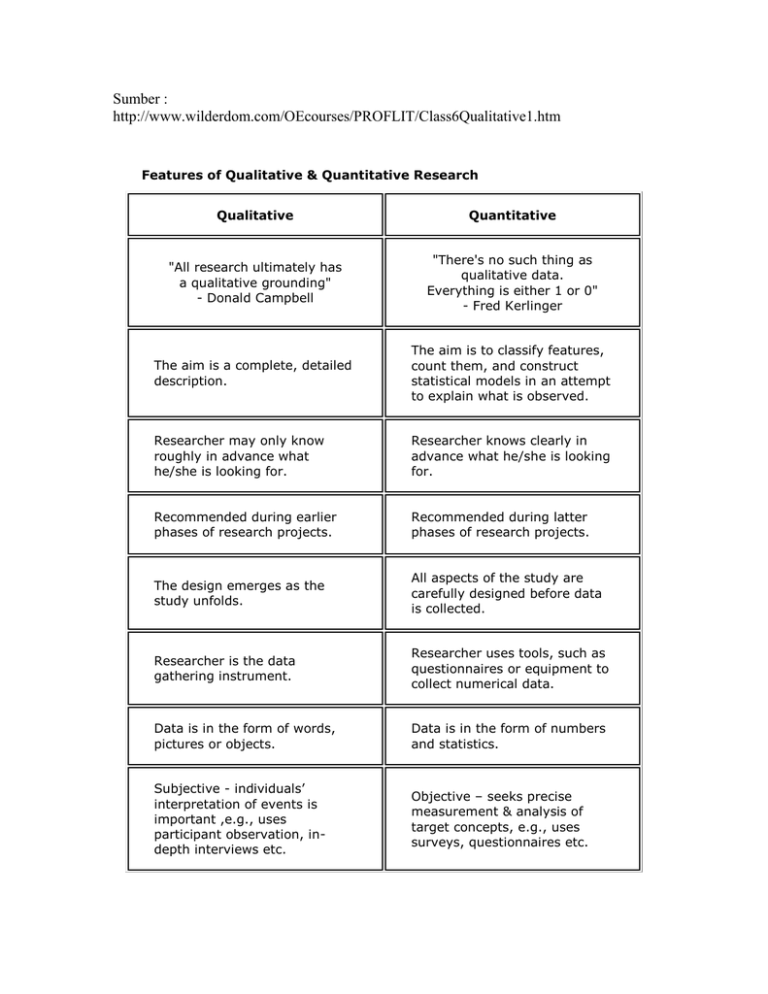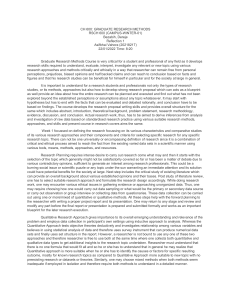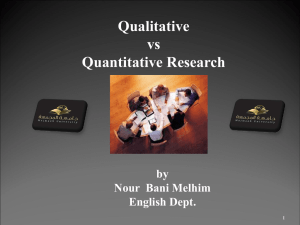Sumber :
advertisement

Sumber : http://www.wilderdom.com/OEcourses/PROFLIT/Class6Qualitative1.htm Features of Qualitative & Quantitative Research Qualitative Quantitative "All research ultimately has a qualitative grounding" - Donald Campbell "There's no such thing as qualitative data. Everything is either 1 or 0" - Fred Kerlinger The aim is a complete, detailed description. The aim is to classify features, count them, and construct statistical models in an attempt to explain what is observed. Researcher may only know roughly in advance what he/she is looking for. Researcher knows clearly in advance what he/she is looking for. Recommended during earlier phases of research projects. Recommended during latter phases of research projects. The design emerges as the study unfolds. All aspects of the study are carefully designed before data is collected. Researcher is the data gathering instrument. Researcher uses tools, such as questionnaires or equipment to collect numerical data. Data is in the form of words, pictures or objects. Data is in the form of numbers and statistics. Subjective - individuals’ interpretation of events is important ,e.g., uses participant observation, indepth interviews etc. Objective – seeks precise measurement & analysis of target concepts, e.g., uses surveys, questionnaires etc. Qualitative data is more 'rich', time consuming, and less able to be generalized. Quantitative data is more efficient, able to test hypotheses, but may miss contextual detail. Researcher tends to become subjectively immersed in the subject matter. Researcher tends to remain objectively separated from the subject matter. (the two quotes are from Miles & Huberman (1994, p. 40). Qualitative Data Analysis) Sumber :http://www.wilderdom.com/OEcourses/PROFLIT/Class4QuantitativeResearchDesigns.h tm Introduction Having developed your research question, identified a reading list, and planned the outline for your literature review, we are now going to move on to look at quantitative research design. What you should keep in my mind is that there are two key, current applications for developing your knowledge about quantitative research design: (i) to look at how your research question can be examined through a variety of different designs; (ii) to understand and describe the research designs used in the empirical literature which you are reading for your literature review. Some Keywords: quantitative research experimental quasi-experimental non-experimental (descriptive) internal validity external validity pre-test post-test longitudinal panel causal-comparative cross-sectional ex post facto trend cohort correlational causal




